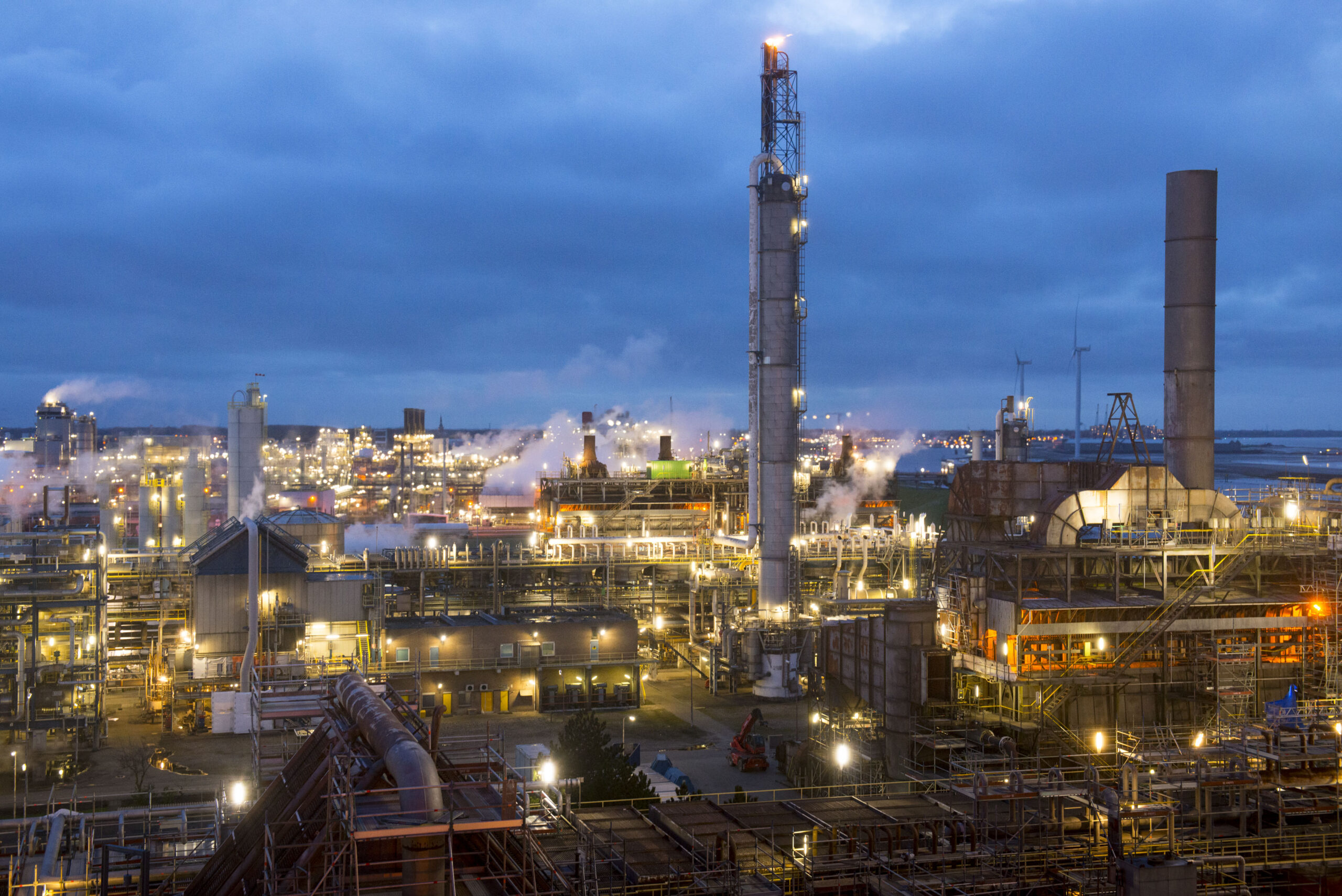By Sjoerd Jenneskens, Sustainability Director, Europe
Through its GasifHy project in Delfzijl, OCI Global plans to kick-start the large-scale production of green methanol in Europe. The name GasifHy represents the project’s focus: Gasifying household waste and sustainable biomass and adding green hydrogen to produce green methanol. Sjoerd Jenneskens recently spoke to Chemie magazine about the project.
“We are looking forward to the next phase in the energy and raw materials transition and we see great potential for green methanol in global decarbonization efforts. Methanol is a building block for many everyday products, from the resins in kitchen cabinets to plastics and textiles. It is also one of the most suitable clean fuels for making road vehicles, inland shipping and maritime shipping more sustainable.”
In 2011, OCI added methanol to its existing ammonia, fertilizer and other nitrogen solutions product portfolio. It bought the integrated methanol-ammonia plant in Beaumont (Texas) in the US, which is now running at full speed. In addition, OCI built a new methanol plant right next to it. And in 2015, BioMCN (now OCI Methanol Europe) in Delfzijl was purchased, the only large methanol plant in Europe where, since the 1970s, two Steam Methane Reformers (SMR) have been cracking natural gas into synthesis gas (H2 + CO + CO2), which is then converted into methanol.
OCI invested heavily in innovation to make the site fully operational, but due to high gas prices in Europe, production wound down in 2021.
OCI wants to turn this moment into an opportunity for the region and its nascent hydrogen economy, replacing the natural gas feedstock with green hydrogen and circular and biogenic carbon from the gasification of household waste (more than half of which consists of biogenic material). The addition of sustainable biomass can further increase the biogenic fraction in green methanol.
Extra H’s
“In the Netherlands, almost all of our non-recyclable waste ends up in incinerators,” says Jenneskens. “With an efficiency of only twenty-four to fifty-five percent, they are quite inefficient. Now, without CCS, it also leads to high CO 2 emissions.” OCI’s GasifHy process converts the carbon atoms in household waste into carbon monoxide: A good building block for making methanol, together with the hydrogen from the household waste. “Because we make the chain more circular and efficient, it is better to replace older waste incineration plants with new GasifHy plants.”
Because the gasification of solid household waste and sustainable biomass produces much more C than H, OCI wants to use green hydrogen produced both on land and on sea from areas north of the Wadden and on the North Sea for its green methanol production in Delfzijl. “Using wind power for electrolysis creates green hydrogen (H2). We can use those extra Hs in our process. We recently partnered with NortH2, which consists of Equinor, RWE, Shell and new investment partner Eneco, to develop the first large scale ammonia and methanol value chains in the Netherlands. Gasunie will transport green hydrogen to us through their planned hydrogen pipeline backbone from 2026.”
The project would create the first operational large-scale hydrogen ecosystem in the Netherlands,” says Jenneskens. “In 2027 we could have our own waste gasification process. Together with locally sourced sustainable biomass, this can supply the raw material for one of our two lines which produces almost 600,000 tons of sustainable methanol. Both lines together now have a capacity of 950,000 tons per year.”
One production line will then be adjusted. “We are going to replace the current SMR, where we crack the natural gas into synthesis gas, with the waste gasification process, which (also) produces synthesis gas. The big advantage of this is that the ratio of household waste and biomass as input in this process can vary. In addition, we can reuse more than half of our existing installation.”
Increasing demand for green methanol
Through the GasifHy project, OCI Global would produce four different types of methanol. Biomass produces bio-methanol. The fossil part in the household waste creates Recycled Carbon Fuel (RCF), while the hydrogen generated with electricity produces E-methanol or Renewable Fuel of Non-biological Origin. When blue hydrogen is mixed in addition to green hydrogen by linking hydrogen production from natural gas to CCS, low-carbon methanol also comes out of the production process. Why also make blue hydrogen in addition to green? Jenneskens says “We do not have time to wait until 2050 to act on climate change. It means starting now and taking a ‘both-and’ instead of an ‘either-or’ approach.
The EU has also introduced regulation to push the shipping industry switch from polluting heavy fuel oil to cleaner fuels, with green methanol the front-runner
With the four types of methanol from GasifHy, this will be a CO2 reduction of seventy to one hundred percent and can reduce nitrogen and sulfur oxide emissions from ships to virtually zero. It is a pivotal moment for the maritime industry and we expect to see a huge increase in demand for green methanol from the industry. For example, Danish shipping company Maersk, is currently building about 20 methanol-fueled container ships and other shipowners announced to add a further 60 worldwide by 2028
With GasifHy, OCI Methanol Europe not only significantly reduces its own CO2 and nitrogen emissions, but also creates a much more sustainable product for customers. “That is what politicians in the Netherlands want and what is important for Groningen: Preservation and sustainability of existing industry and value chains, plus the start of the hydrogen economy.”
The need for greater regulation
“The increasingly stringent European environmental regulations are incentivizing and regulating industry, opening up opportunities for new approaches,” says Jenneskens. “But we see this happening less for raw materials in the chemical industry. More needs to be done regarding green methanol.” OCI regularly calls on the EU and other governments to implement the level of regulation for the chemicals industry that has stimulated demand and improved sustainability in the wider materials value chains. An example is the blending obligation for biofuels for end users. RCF methanol is excellently positioned to keep the CO 2 chain closed if the chemical industry uses it as a building block in the materials value chain.
In the waste hierarchy – prevention, reuse, recycling, energy generation, incineration and landfill – gasification ranks well above energy generation. “In the Netherlands, there is therefore enormous potential with seven to eight million tons of waste that is now incinerated at a low level,” says Jenneskens. “In the long term, you are now left with residual waste after prevention, reuse and recycling. GasifHy, on the other hand, keeps the chain closed. From kitchen cupboard to methanol as a building block for a new kitchen cupboard.”
This is an extract from the article first published in VNCI Chemie magzine in May 2023.

